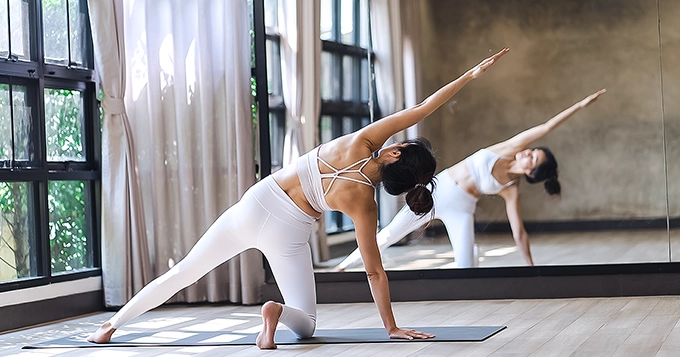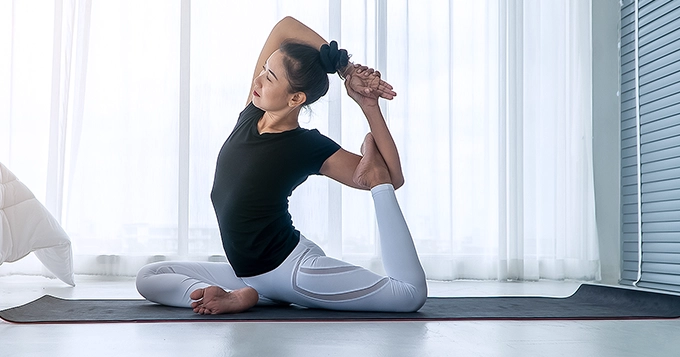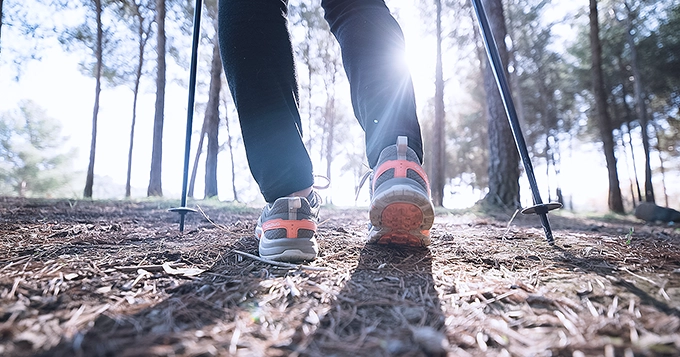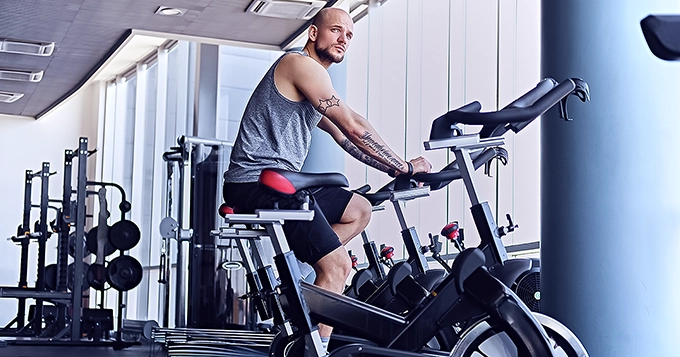What is Low Impact Cardio?
Low-impact workouts focus on reducing stress on your joints while high impact training involves activities like running or gymnastics that exert more force on joints. Many people mistakenly believe that low impact cardio is easier or less effective, but that’s not true. For instance, a 20-minute music-based class can yield the same results as a 30-minute hike.
Furthermore, it’s important to differentiate between low impact and low intensity. Take mountain climbers, for example. Performing slow and controlled reps offers lower intensity but still engages your core muscles intensely. On the other hand, doing mountain climbers at a fast pace as a cardio burst increases intensity and makes you break a sweat.
Incorporating both high and low impact workouts into your routine is essential for maximizing the benefits for your body. If you’ve been neglecting low impact exercises, you could be missing out on significant advantages.
Benefits of Low Impact Cardio
Mental Well-being
It’s not just about physical improvements; engaging in low-impact cardio can also significantly improve your mental well-being.
Physical activity is recognized for enhancing endorphins and dopamine, which elevate mood. However, constantly engaging in high-impact, high-intensity exercises can lead to mental and physical exhaustion. Low-impact cardio offers a valuable alternative, allowing you to enjoy mental health benefits without pushing yourself to the brink.
Research indicates that even something as basic as walking for an hour each day can reduce depression rates, enhance mood, increase energy levels, and alleviate anxiety.
Reduced Risk of Injury
If you’re seeking ways to safeguard your joints from potential injury, consider incorporating low-intensity cardio into your routine.
Low-impact cardio exercises elevate your heart rate while minimizing strain on your joints. Low-impact exercises reduce the chance of injury since there is less repetitive contact between the body and the ground and because they are more stable or fixed. They also serve as effective means for recovery and rehabilitation from previous injuries.
While maintaining proper form and breathing techniques remains crucial, low-impact exercises are gentler on joints and muscles. Activities like swimming are frequently recommended for individuals aiming to regain strength following an injury.
Better Mobility and Flexibility
Workouts involving yoga, swimming, and Pilates are well-known for helping to strengthen your core, improve your range of motion, and improve flexibility. Numerous low-impact exercises enhance flexibility, which helps to reduce stiffness and muscle pulls.
Great for Managing Weight
There’s a common misconception that only high-impact exercises are effective for burning calories. However, low-impact workouts can be equally efficient. Take swimming, for instance. A 155-pound individual can burn 446 calories during an hour of leisurely swimming and 744 calories when doing the breaststroke for the same duration. Interestingly, running at 6 miles per hour also burns 744 calories for this person. The notable distinction lies in the fact that swimming can be sustained as a daily activity much more easily than running.
Looking to burn fat and slim down? Low-impact cardio can be your secret weapon. By primarily targeting fat as a fuel source, it helps you burn those stubborn pounds effectively. Incorporating sessions of low-intensity cardio into your routine can ramp up your body’s fat-burning capabilities during and after exercise, helping you achieve your weight goals.
Great for Active Recovery
Low-intensity cardio offers the perfect solution for active recovery.
After pushing your limits in intense training sessions, your body needs time to recover and repair. When you need a break from high-impact, intense workouts, turning to low-impact activities like yoga can provide the perfect opportunity for your body to recover and ultimately return even stronger. Low-impact exercises keep you mobile and actively engaged, ensuring you maintain your fitness momentum while giving your joints and muscles the rest they deserve.
Light activities such as walking or gentle cycling promote blood flow to fatigued muscles, aiding in removing metabolic waste and facilitating the delivery of essential nutrients. This gentle movement helps expedite your recovery process, ensuring you’re ready to engage in your next workout sessions feeling refreshed and revitalized.
Other benefits include:
- Improved cardio-respiratory fitness
- Reduced fatigue and pain
- Better sleep quality
- Improved balance
Examples of Low-Impact Cardio Exercises
What is considered low intensity Cardio?
Low-intensity cardio refers to aerobic activities performed at a moderate pace that can be sustained for an extended period without causing excessive fatigue. Best low impact cardio include:
- Walking
Walking is one of the most accessible exercises, requiring little more than a pair of sneakers to get started. Its accessibility and convenience make it a viable option for individuals across all fitness levels, from beginners to seasoned runners and weightlifters alike. Incorporating walking into your routine can serve as an excellent way to stay active on recovery days and provide an additional opportunity to spend time outdoors, benefiting both physical health and overall well-being.
- Swimming
Swimming stands out as one of the exercises with the lowest impact cardio because it offers a full-body workout while minimizing stress on the joints and muscles. The buoyancy of water reduces the impact on your knees and ankles.
Moreover, water’s resistance enhances muscle strength and endurance without the need for heavy weights, making swimming a highly effective form of resistance training. Its rhythmic movements also promote cardiovascular health, improving heart function and circulation.
Additionally, the constant engagement of multiple muscle groups, from the arms and legs to the core, results in a comprehensive workout that can help increase flexibility, balance, and overall fitness levels. Whether leisurely laps or more vigorous strokes, swimming offers a versatile and enjoyable way to stay active while minimizing the risk of injury.
- Hiking
Hiking is a great low-impact exercise because it provides a full-body workout while minimizing joint stress. It offers diverse terrain options suitable for all fitness levels, enhances strength, endurance, and balance.
This low-impact cardio workout offers the chance to immerse yourself in nature or challenge your body on inclines. Additionally, research indicates that walking in natural environments can enhance mental well-being and decrease the likelihood of depression.
Hiking provides a workout that leaves you feeling invigorated, while also affording your joints some relief from the repetitive impact of running.
- Rowing
Rowing is a fantastic low-impact exercise because it provides a full-body cardiovascular workout without stressing the joints. Its smooth, gliding motion engages major muscle groups, promotes strength and endurance, and offers customizable resistance levels for individuals of all fitness levels, making it a safe and effective choice for improving overall fitness.
- Stationary Biking
Stationary biking is an excellent low-impact exercise for several reasons.
Firstly, it provides a cardiovascular workout without putting stress on the joint. The smooth, circular motion of pedaling engages major muscle groups in the legs, including the quadriceps, calves, and hamstrings, while also activating the core muscles for stability.
Stationary bikes also often come with adjustable resistance levels, allowing you to tailor the intensity of their workout to their fitness level and goals.
- Elliptical trainer or step machine
The elliptical trainer and step machine are both excellent low-impact exercise options with unique benefits.
The elliptical trainer mimics walking, jogging, or running with minimal impact on joints, making it perfect for those with joint issues or in recovery. It provides a full-body workout, engaging arms, legs, and core muscles together. You can tailor the intensity to your fitness level and goals with adjustable resistance and incline settings.
The step machine, or stair climber, primarily strengthens the lower body and improves cardiovascular fitness by simulating stair climbing. It targets the quadriceps, hamstrings, glutes, and calves effectively. While it may not engage the upper body as much as the elliptical, it provides a high-intensity workout that enhances leg strength, endurance, and cardiovascular health.
Ultimately, both machines provide effective low-impact exercise options with their own set of benefits, allowing individuals to choose based on personal preferences and fitness objectives.
- Shadowboxing
Shadowboxing is a full-body workout that does not stress the joints. It involves throwing punches and moving as if fighting an imaginary opponent. It improves cardiovascular health, coordination, and agility while also releasing stress and honing boxing techniques. It also requires no equipment and can be done anywhere.
- Yoga
Yoga is a wonderful low-impact exercise that focuses on strengthening, stretching, and relaxing the body through poses, breathing exercises, and meditation. It improves flexibility, muscle strength, and balance while also reducing stress and promoting mental well-being. With various styles and levels available, yoga offers something for everyone, regardless of fitness level or age. It’s a gentle yet effective way to cultivate mindfulness, stay active, and enhance overall health and vitality.
General tip: During low-intensity cardio, you should aim to maintain a steady rhythm of movement without pushing yourself to the point of breathlessness or discomfort. This level of exertion allows you to reap the benefits of aerobic exercise while minimizing stress on your joints and muscles.










